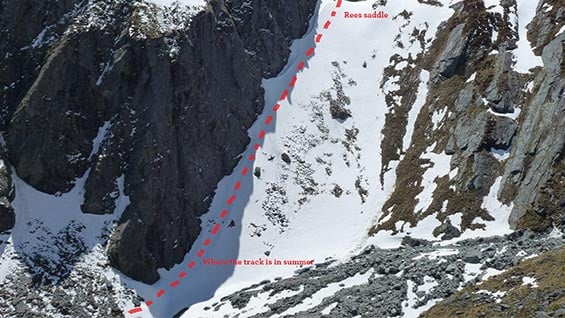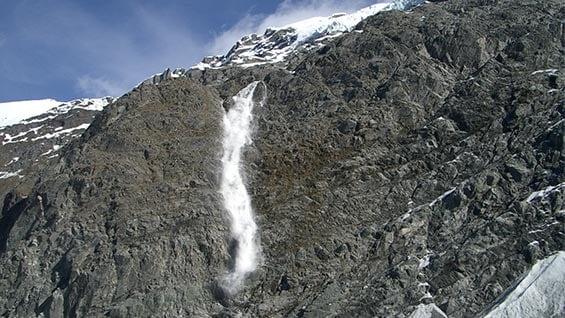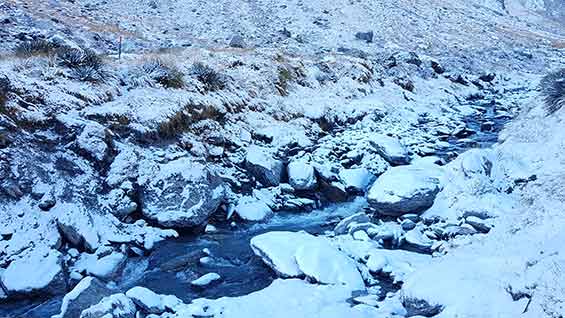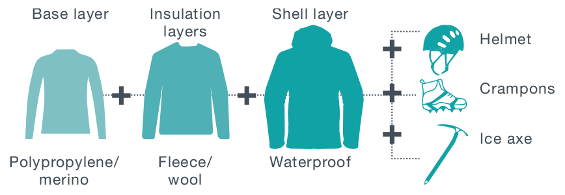May to October (winter season)
Introduction
Walking the Rees-Dart Track during winter should only be attempted if you have alpine skills, equipment and experience.In winter the Rees-Dart tracks are impassable to all but experienced mountaineers, due to heavy snow, especially in the Upper Rees and Snowy Creek area.
Expect challenging track conditions
Snow is present in higher areas and sometimes on lower areas. Deep snow can hide track markers.

Rees Saddle in winter
Image: DOC

Avalanche on the Cascade Saddle route
Image: Eiji Kitai
 Between Rees Saddle and Shelter Rock Hut
Between Rees Saddle and Shelter Rock Hut
Image: Kerrin Burnnard
Avalanches are possible
There are multiple avalanche paths that are typically active from May to November. The greatest risk is in areas with avalanche terrain rated as 'challenging' or 'complex' on the Avalanche Terrain Exposure Scale. These areas are:
- The Dart Track from the Whitbourn River confluence to the Dart Hut
- The final 1.5 km before Shelter Rock Hut on the Rees Track
- Rees Track between Shelter Rock Hut and Dart Hut
Avalanches can occur outside of these areas but are less frequent.
Read more about avalanche terrain and paths on the Rees-Dart Track and be avalanche alert in Whakatipu.
The upper Snowy Creek bridge is removed during winter due to the area being avalanche prone. The exact timing of this removal depends on weather and avalanche conditions.
Conditions are cold, wet and windy
During winter months, the Rees Dart Track is frequently cold, wet and windy. Dress for the conditions.

Expect reduced hut facilities
Hut facilities are reduced.
- Gas cookers are not provided – you need to bring your own cooking stove.
- Running water may not be available. Water can be obtained from the outside water tank; if this is frozen, then from the nearest watercourse or by melting snow. We recommend that you treat all stream water in case of giardia or other bugs.
- No DOC rangers.
- Pit toilets.
- No re-supply of fire place fuel - wood should be sourced from the forest floor for the next hut users.
- No emergency radio facilities.
You need to be totally self-sufficient
You need to be totally self-sufficient. In addition to what to pack on an multi day hike, you also need:
- food for at least two extra days
- stove and gas for cooking
- lighter or matches
- alpine equipment: ice axe and crampons
- avalanche equipment: beacon, snow shovel, avalanche probe.
- personal locator beacon
- mountain radio or satellite messenger (optional)
